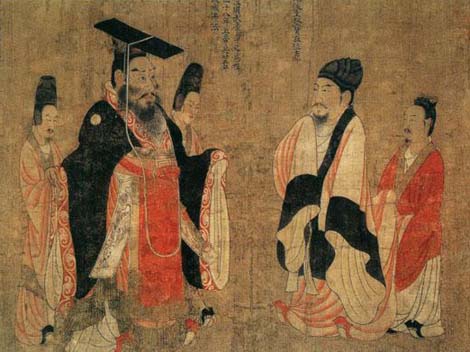 Interested in Ancient China’s history? Want to know the timeline of Ancient China’s important events? Does the timeline of Ancient China’s development interest you? Read our guide for more facts and information…
Interested in Ancient China’s history? Want to know the timeline of Ancient China’s important events? Does the timeline of Ancient China’s development interest you? Read our guide for more facts and information…
The modern nation of China is rapidly rising in today’s world; but the history of China as a nation began over 5000 years ago. The history of China documents how Ancient China developed from a fragmented rural society into the China of today.
EARLY LIFE
Modern China is home to some of the most technologically advanced cities in the world; but, it is the often forgotten rural countryside that was the site of Ancient China’s beginning. Around 4000 BC up until 2205 BC the Ancient Chinese like many other civilizations settled by a source of water as they lived by the Yellow River. Along the Yellow River Ancient China’s population focused on farming and raising crops. Also, at this point in Ancient China’s timeline the people were beginning to fashion tools out of stone for use in farming as well as weapons.
As the timeline progressed China continued to develop into the Bronze Age of 2205 BC to 256 BC. During this time Ancient China fittingly discovered the usefulness of bronze and improved their previous stone tools and weapons by using bronze in their creation. With time and continued improvements in agriculture and living practices the population of ancient China began to rise. This rise in population lead to increased conflict and propelled China away from rural nomadic life and into the first of Ancient China’s dynasties.
THE HEIGHT OF ANCIENT CHINESE LIFE
During the Xia and the following Shang dynasties although a strong reliance on agriculture continued a social hierarchy and class structure evolved in Ancient Chinese life. From 1766 BC to 1050 BC on the timeline Ancient China continued to discover many ways to improve their way of life. During the time period the earliest evidence of a writing system and writing record exists.
Also, Ancient China continued to develop militarily and began to use the horse and chariot, which allowed them for a time to successfully defeat enemy barbarian tribes. Also during this time period around 1200 BC on the timeline the first records of a calendar system exist. The Shang Dynasty eventually crumbled to barbarian attacks from the south, east and north and gave way to the Zhou Dynasty. The Zhou Dynasty continued Ancient China’s growth and development as during its reign of 1050 BC to 256 BC the philosophies of Taoism, Buddhism, and Confucianism emerged. Despite the continued development in education, Ancient Chinese society was then beginning to fracture as it faced both external and internal pressures.
ANCIENT CHINA’S END
The Zhou Dynasty although spanning a continuous reign on the timeline of 1050 BC to 256 BC, in truth faced a division in rule as around 800 BC the Zhou dynasty was attacked from the northwest by nomads and barbarians. The remaining nobles of the Zhou dynasty responded to this attack by establishing a new capital and on the timeline this period is seen as the rule of the Eastern Zhou.
Between 771 BC and 481 BC Ancient China continued to prosper in education as many scholars where pursuing knowledge in this era known as the One Hundred Schools of Thought. It was from this research that Ancient China came to discover iron. Despite, this prosperity in knowledge, conflict was growing between the city-states and the regions were beginning to threaten the stability of the Zhou dynasty. The Zhou dynasty and Ancient China came to its end on the timeline at the end of the period of 481 BC to 256 BC, when many of the smaller city states banded together until one, Ch’in, came to rule all of China—thus moving Ancient China into the age of Imperial China.




